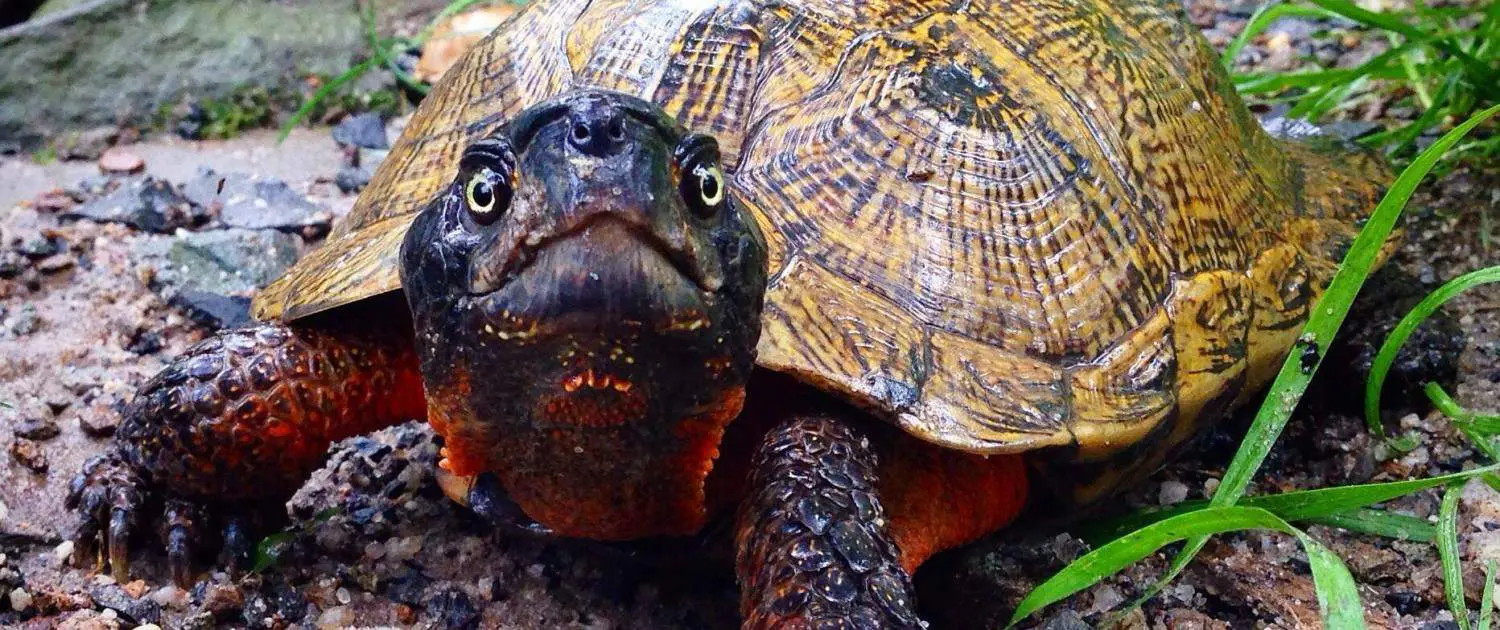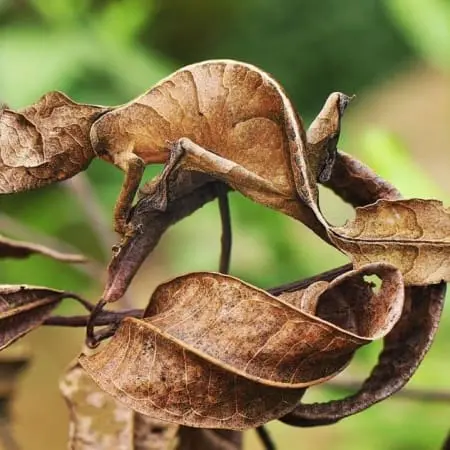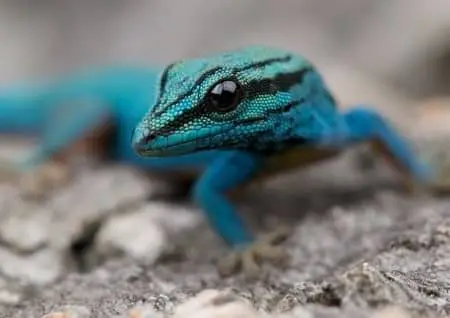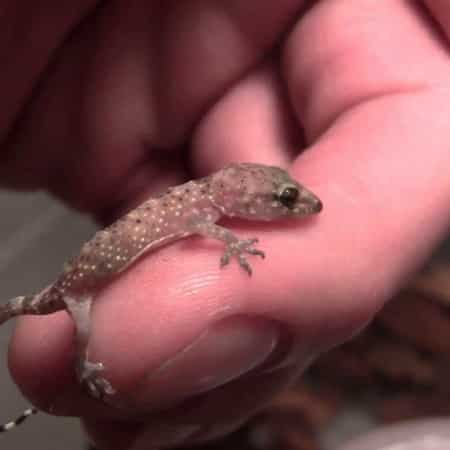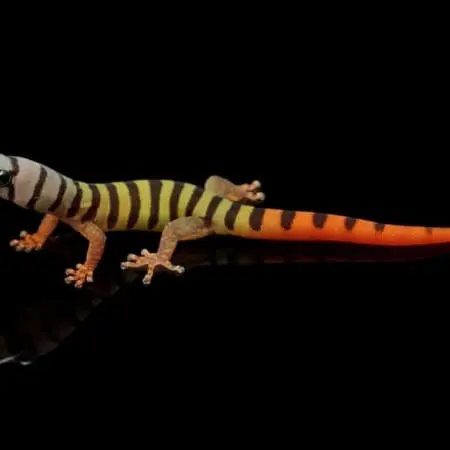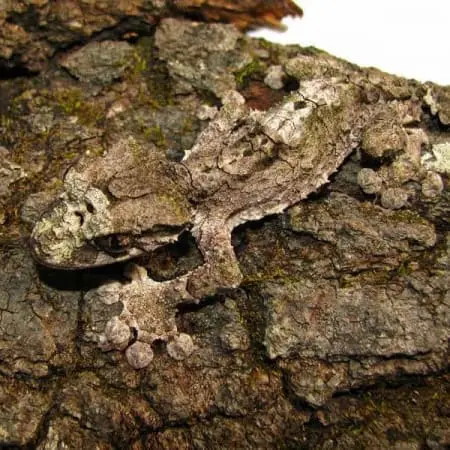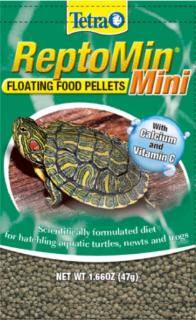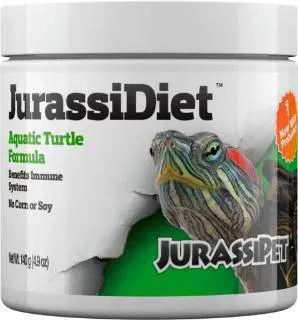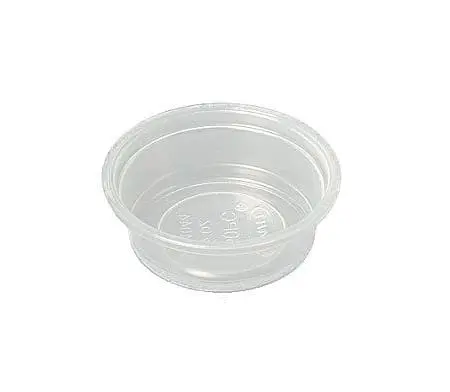North American wood turtle Care Sheet
Before purchasing a baby north american wood turtle for sale, or any wood turtle for sale, as with any animal it is important to do your proper research as preparation to provide the animal with the proper care. Purchasing a North American wood turtle for sale should always be bought from a breeder of captive bred wood turtles for sale, and never wild caught baby or adult wood turtles for sale. Be sure to also explore all of our baby turtles for sale including aquatic turtles for sale and box turtles for sale.
(Glyptemys insculpta) (information provided by Chris Leone of Garden State Tortoise LLC). The North American Wood Turtle, also referred to as “old red legs”, the North American wood turtle has a very unique appearance. The carapace is broad and flat with prominent, rigid growth rings designed to look “sculpted” or like it’s made out of wood. The marginal scutes at the back of the carapace exhibit varying degrees of flaring and are serrated except in very old specimens.
The ground color of the carapace is brown, black or yellow-ish and is covered in yellow to orange rays, flecks, radiations and spotting. A noticeable keel runs down the center of the carapace and eventually disappears with age. Many wood turtles are usually stained from the rivers and streams they live in so when they are dry, the take on a uniform brown or slate grey coloration. From a far, they appear as flat rocks strewn about a stream embankment. The plastron is much like the Blanding’s turtle’s in that it is yellow with a black blotch on each plate. However, it is not hinged. Just like Blanding’s, no two wood turtles have the same plastral pattern.
Glyptemys insculpta has large, powerful front limbs, equipped with sharp nails. The legs are a beautiful rusty orange to red color (hence the name old red legs) and may even be a lemon yellow in western populations. The head is black with large, dark eyes that may or may not feature a bright yellow iris. The chin may have minor flecks of orange, yellow or red and the neck is highlighted by these colors.
The tail is very long in neonates which can sometimes fool humans into thinking they are young snapping turtles. Young wood turtles are also an unvarying brown or grey and do not exhibit much color until after their first or second year of growth. Adult male wood turtles can be separated from females with a deeply concave plastron, an impressively large “pit bull” head, larger front limbs, a massive, tick tail and an overall larger size.
They also sport a different carapace shape at times in that they are narrower when viewed from above. Glyptemys insculpta reaches an adult size of 6 to 9” with males typically being larger.
This species inhabits cool mountain streams and river branches along the northeastern United States such as most of New England, NJ, NY, PA and VT. It also extends south to Virginia, west to Michigan, Minnesota and occurs in both Canada and Nova Scotia. Slow moving streams with rocky/sandy substrate and sun-drenched banks are favored.
The turtles hibernate in eddies found within these streams or rivers but take to land in spring. During the summer, wood turtles will spend much of their time foraging in forests, fields, meadows and bogs. They take a strong liking to corn fields, especially during nesting season. In the fall, they make their way back to the water to breed once more before hibernation. They will remain inactive as they hibernate under the water from November until March, April or May depending on the area or when spring temperatures set it. Breeding commences again after hibernation with egg laying taking place throughout the month of June.
North American wood turtles are highly protected in the states where they occur today. NJ is perhaps one of the only states (if not the only), that still allows the legal keeping of them in captivity through means of licenses or permits. Some states have completely banned the keeping of them at all, regardless of how they were obtained.
They are listed as threatened or endangered in all states they are found in and are registered under CITES II. Because this species moves considerable distances during the active season, they are over-collected for the illegal pet market and crushed by vehicles on roads. Predation of juveniles and eggs has also had detrimental effects on wild populations.
Loss of habitat and pollution are not to be over looked either. The wood turtle is in serious trouble in its native range, some believe even more so than the illusive bog turtle, the only other member of the genus Glyptemys.
Availability
There are several keepers having success with wood turtles in the American reptile community today. When exposed to a somewhat normal hibernation and kept in appropriate outdoor housing, they prove to be quite prolific. Hatchlings are available usually in the early fall and occasionally, legal adults are offered for sale. While babies tend to fetch a reasonable price, adults can be very expensive. Always do your homework and know state laws. Wood turtles are often offered for sale out of states where they naturally occur and many times this is highly illegal. Transporting one of these animals (regardless if it is captive bred or not) across protected state lines is a violation of the Lacey Act which is punishable by hefty fines or even jail. Always buy captive bred and know exactly where your turtles are coming from. Every year, Garden State Tortoise offers beautiful, healthy baby wood turtles for sale. These specimens are 100% legal, born right here from our adults. Like our Blanding’s turtles, we can only offer wood turtles to those who reside in states where it is legal to own them. Proof of permit may be required in order to complete a sale. We do not take any regulations for this species lightly.
Life Span
Glyptemys insculpta can live a long time. They mature very slowly in the wild and may not breed until they are 17-20 years of age. Old adults probably in their 80s are not unheard of and they may live even longer. Like the Blanding’s and box turtles, they follow a similar life pattern and are considered some of the longer lived of all turtles.
Caging
Except for when very young and vulnerable, wood turtles should not be kept indoors. They are extremely active turtles that need to move about a large area. Summer sunlight and cold winters are necessary for this species to live long and reproduce. Babies can be housed in Rubbermaid totes on moistened peat moss with top soil. Several half logs or driftwood should be added for security. They may be more aquatic than their parents and so at least half the unit should be fitted with a large, shallow water tray/dish for swimming, drinking and soaking. They can and do drown, so be sure to keep the water area shallow (between 2 and 3”) and add plenty of objects to the water for them to grasp onto (fake/live plants, wood pieces, cork bark, river stones). One large Rubbermaid tote can house a dozen hatchlings for up to their first year. They grow quickly and once they are of at least 4”, they can be moved outside. Wood turtles are aggressive by nature with cannibalistic tendencies. They will certainly eat their own newborns. Severe tail nipping is a common practice which is why most adults are missing at least part of the end of the tail. Watch closely for overly aggressive turtles, particularly males.
Outdoors, Glyptemys insculpta will thrive in spacious, naturalistic enclosures. For a group of 2 males and 4 females, we recommend constructing a 30×20 foot pen made out of strong walls. Pressure treated wood, landscaping timbers, picket fencing and concrete blocks work well. Always be sure to completely secure the walls of the pen. Wood turtles are quite possibly the best climbers of the turtle world and have been known to scale 6 foot chain link fences with ease. It may be necessary to create an over-hang along the entire top of the walls to prevent escapes. While they may not be big diggers, they will absolutely pace along the walls looking for a weakness in the fencing or a spot to climb out. Inside the enclosure, a good sized water area should be provided. A 10×10 “pond type basin” can be created or you can even design a stream like we did. By digging an 18-24” deep trench about 15 feet long, you can make the width vary as you move down it. This makes for a naturalistic looking stream or creek for the turtles, much like what they would inhabit in the wild. Fish friendly pond liner found at all pond stores, Lowes and Home Depot is best to use. You can add peat and mud to the bottom and plenty of river stone, pea gravel or sand in it. A few pond plants like lotus, hyacinth, grasses, tussocks, sedges or iris adds a nice splash of color to the water area. It also provides the turtles with places to hide. In addition, the plants help to keep the water clean. We install a powerful pond pump at one end of the stream to keep the water constantly flowing slowly like a real wood turtle habitat. This in combination with the plants and rocky/peat substrate, keep the water nice and clean.
The land area is just as important and needs to be well planted and landscaped. Low lying shrubs, bushes, grasses, flowers and other plants should be randomly placed all over the pen. These create a natural setting and offer an abundance of hiding areas. Rotting logs, driftwood, boulders, slates and other rocks should be added as well. Wood turtles will appreciate these items by climbing over them, basking on them and wedging under them.
Bare, sandy areas should be offered to the turtles as well. These will be utilized by nesting females looking to deposit their eggs.
Lighting, Temperature and Humidity
While indoors for the first year or so of life, Glyptemys insculpta should be provided with an ambient room temperature of between 75 and 80F. This can be allowed to drop into the low 60s and even high 50s at night. They do not like it hot; therefore, a spot light or heat emitter is not necessary inside the enclosure. Fluorescent UVB lighting should be provided instead which will benefit the health of the young turtles greatly. Never let neonates dry out and always make sure they stay at a relative humidity level of between 80 and 90%.
Outdoors, wood turtles should be subjected to all natural elements. This means, spring, summer, fall and winter temperatures along with weather conditions are beneficial to them. They do not fare well in very hot climates and should be offered an artificial cooling period no matter what, should the keeper want to breed this species long term. When situating the new outdoor pen, pick a spot that receives both full sun and plenty of shade. They need to be able to escape the heat by retreating to a shady area quickly. In the peak of summer when temperatures are high enough to warm up even the water area, wood turtles will need to find refuge in a cooler part of the unit. This species favors rain showers and thunder storms. They become active during them and just after them, especially in the morning
Substrate
Indoors, neonates should be kept on a peat/top soil mix. They must not dry out, or they will perish. Outdoors, the pen should feature sandy areas, along with leaf litter and rich soil. In nature, they occur in rocky areas so adding various stones, boulders or rocks to both the water and land areas are recommended.
Food
North American wood turtles accept a wide variety of food items. Like box turtles, they take both plant and animal matter. Live foods are relished such as mice, earthworms, super worms, grubs, slugs, snails, tadpoles and frog/toad eggs. Our adults have even managed to eat wild birds they find in their enclosure! They will also eat their young if given the chance. Strawberries, mulberries, raspberries, blueberries, bananas, peaches, melons, yams, sweet potatoes, grapes and tomatoes are also voraciously consumed. Glyptemys also learn to accept wet dog/cat foods. Only use brands with organic, natural or whole ingredients and do not offer constantly. Babies will take commercial pellets when being raised indoors but be sure to offer plenty of the above listed items as well.
Temperament
Some people refer to their wood turtles as “dog-like”. I can vouch for this statement because I too feel this way. This species is extremely alert, inquisitive and responsive. They will lash out at food items and follow you around for them. They rapidly learn to accept you, the keeper, as their food source. Glyptemys insculpta is also arguably considered the smartest reptile in the world. They can “problem” solve to an extent according to studies done. Along with our Manouria emys tortoises, I truly feel that wood turtles are one of, if not the smartest. They sit and watch inventively, taking in their surroundings by cocking their heads from side to side. They wait for any changes and are quick to discover a possible escape route. One of our adult male wood turtles proved to be smarter than us many years ago. The family dog had wrecked a section of the retaining wall around the wood turtle pen. We were unable to fix it right away and with a harsh summer storm soon to hit, I had to put together a makeshift, temporary fix just to get through the night. I used ply wood and stacked it along with some bricks to fill in the gap. The entire time I threw this together, one lone male wood turtle sat just 5-6 feet away with his eyes locked on me and my “project”. When I was done, he moved closer, still watching. I was interested in his reaction but had to call it a night with the storm approaching. I had a bad feeling about this all night and sure enough, the next morning, the makeshift repair had been slightly tampered with by the storm. This was enough for the intrigued turtle and he was gone. We never saw him again. He knew something had changed in the fencing around him and he knew when and where to go. I’ll never make that mistake again!
Reproduction and Breeding
North American wood turtles focus their breeding attempts twice a year with random mating taking place at other times. In the early fall and again in spring, males will chase and grasp onto the females under water. Sometimes this occurs on land but not typically. The male positions himself directly on top of the female which is enabled by the concave plastron he exhibits. He tightly grasps the front of her carapace and viciously bites at her head. He also slams her down over and over again. This can actually be heard from on land while it takes place under water! He snakes his long, tick tail underneath hers and begins copulation. In late May and throughout June, female wood turtles impatiently search for a nesting site. Like Blanding’s turtles, they may travel considerable distances to seek out the perfect spot. They may return to the selected spot year after year. Oviposition in this species takes places in early morning between the hours of 6:30 and 9:30 and also in the evening between 5 and 9 pm. These times are what we commonly experience with our adults. These turtles are quicker to complete the entire nesting process than many other American species, sometimes finishing in no more than an hour. On a sandy slope or embankment, or in a field like setting, the female wood turtle digs a flask shaped nest and lays 6 to 12 eggs. Sometimes as little as 3 or as many as 18 eggs are laid in a single clutch. The eggs are dug up and placed in plastic deli cup containers on moistened vermiculite. They are then put inside incubators where they will remain at 84F for 40 to 55 days. The sex of baby wood turtles is not determined by the temperature the eggs incubate at like most other turtles but is instead decided by the embryo’s individual chromosomes. The babies are robust and rambunctious upon emergence from their leathery shelled eggs. Once the yolk sac is absorbed within the first few days, they are placed into their rearing quarters. We begin feeding after 4 to 5 days in their new setting.
This valuable Information has been used with permission of GST – Copyright 2013, Garden State Tortoise LLC. All rights reserved.

